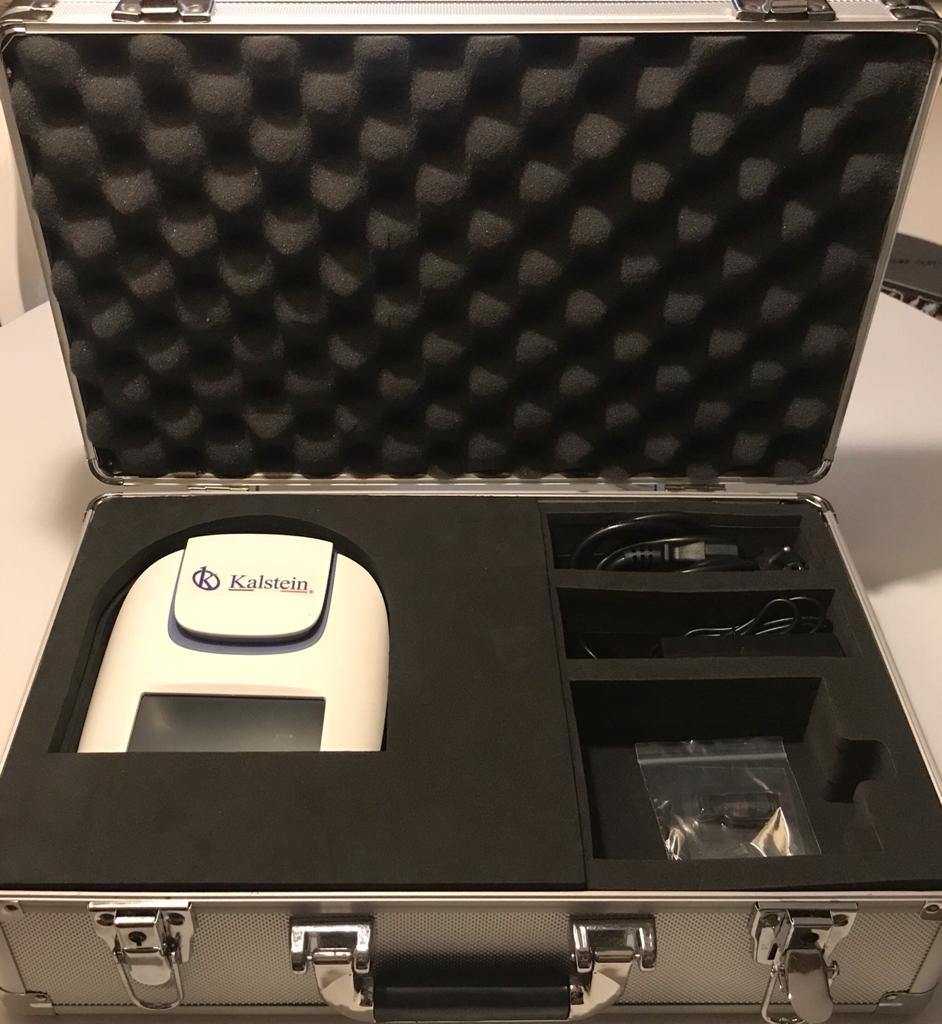A fluorometer is an instrument used for fluorometric quantification, since it allows quantifying, detecting and monitoring analytes and their reactions in the laboratory, such as chlorophyll. This equipment measures the fluorescent signal intensity (fluorescence) from stains attached to biological molecules, as well as natural fluorescent molecules based on excitation (Ex) and emission (Em) wavelengths.
Fluorescence is defined as a type of luminescence that occurs in either gaseous, liquid, or solid substances that are capable of absorbing electromagnetic radiation (for example, light), and emitting some of that energy as radiation of a wavelength different from that absorbed.
Characteristics of a fluorometer
A fluorometer is a laboratory instrument characterized by using optical filters to isolate incident light and fluorescent light, and measures the sample’s ability to absorb light at a wavelength and emit light at a longer wavelength. They are highly sensitive devices, and their optical filters are generally inexpensive and easy to change. This makes fluorometers very useful in scientific and experimental research, and also for academic purposes.
In these instruments, a (luminous) radiation source emits light of an excitation wavelength for the compound to be measured or analyzed. The excitation of the compound to be analyzed is produced by the use of optical filters, which work by blocking other wavelengths and transmits the appropriate wavelength to produce excitation of the compound. Light generated by the radiation source passes through the sample to be measured, and a certain amount of wavelength is absorbed, while it is then emitted at a higher wavelength. This light that is emitted is measured by a detector.
What is chlorophyll?
Chlorophyll, the green pigment that plants and algae use to capture sunlight, emits dim red light during photosynthesis. A phenomenon known as “chlorophyll fluorescence,” which is imperceptible to the human eye but provides information about the instantaneous rate of photosynthesis, providing an “optical door” that tracks the plant’s health and functional status.
The light energy absorbed by the chlorophyll molecules in the leaf has three possible destinations: Most of it will be used in photosynthesis (photochemical energy). A small part of the energy, which cannot be used in photosynthesis, is dissipated in the form of heat or can be re-emitted as light (in the form of fluorescence) so that the excess energy does not damage the photosystems. The amount of energy emitted as fluorescence is very small.
Measurement of chlorophyll fluorescence
Today, chlorophyll fluorescence is considered a very useful tool to evaluate the photosynthetic state and detect physiological and environmental changes of plants. The fluorescence emitted by chlorophyll accounts for 1 to 3% of the total light absorbed. The spectrum of fluorescence is different from that of absorbed light, with an emission peak at a higher wavelength, the emission spectrum of chlorophyll shows a peak at 682 nm, therefore, fluorescence can be quantified by exposing the leaf to a known wavelength, less than 670 nm. And then measuring the light emitted at a longer wavelength between 670 and 750 nm.
The measurement of chlorophyll fluorescence is a key technique for the evaluation of plant physiology, since it provides essential information on the state of the photosystem II. Thus, it allows the evaluation of growth and development parameters, stress detection, plant responses to environmental changes, genetic variation and ecological diversity. They are quick and very effective measures that do not destroy the plant and that inform the changes produced at the leaf level.
What does Kalstein offer you?
Kalstein is a manufacturer of medical and laboratory equipment of the highest quality and the best technology at the best PRICES in the market, so you can make your PURCHASE confidently with us, knowing that you have the service and advice of a company specialized in the field and committed to provide you with safe, economical and effective options to perform your functions in the right way. HERE
This time we present our Fluorometer YR412-A. This innovative equipment with cutting edge technology has the following features
- It’s a simple device: 4.3-inch touch screen, small and easy to use.
- Easy measurement in 3 seconds for DNA, RNA and proteins.
- High sensitivity: the lowest DNA detection limit is 0.5pg/ul
- Two optical channels: equipped with two fluorescence channels for nucleic acid, protein quantification in a detection.
- Linear dynamic range: five orders of magnitude.
- Opening system: you can combine the instrument with the reagent you choose.
- You can save up to 1,000 data and output per USB port.
- Adapter: 0.5 ml qPCR tube adapter 0.2 ml qPCR tube adapter.
For more information we invite you to take a look at: HERE

